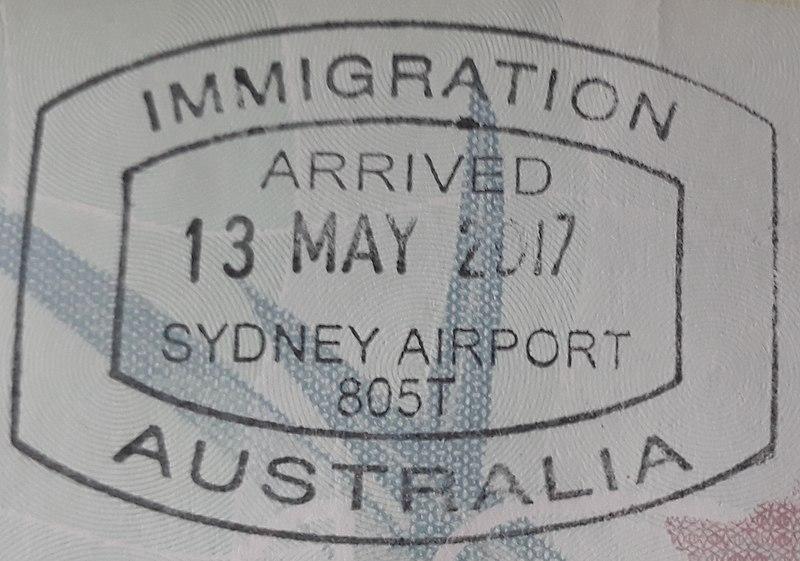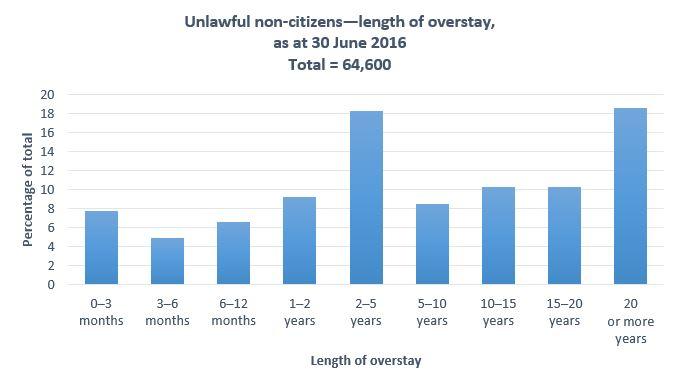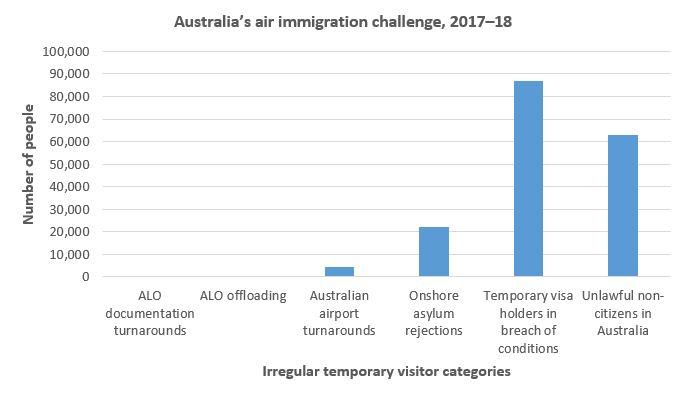Australia’s other border security problem: visa overstayers
Posted By John Coyne on March 6, 2019 @ 15:00

There’s been plenty of discussion [1] lately about the challenges of onshore protection claims from people arriving in Australia by air. Last month, I wrote [2] that air arrivals were Australia’s most pressing immigration border security issue.
The argument is simple enough. In 2016–17, 18,290 applications for protection visas were lodged by people who arrived by air, 1,711 of which were granted. In 2017–18, the number of claims jumped to 27,931, 1,425 of which were granted.
Another dimension of the migration debate now finding its way into the public discourse is the problem of Australia’s visa overstayers, who are officially known as ‘unlawful non-citizens’.
The Department of Home Affairs’ 2017–18 annual report [3] states that 99% of the 8,694,048 people granted temporary visas in that year maintained their lawful immigration status while in Australia. However, an estimated 86,940 people who entered Australia in 2017–18 breached their visa conditions. Many of them quickly left the country, but as of 30 June 2017, there were 62,900 unlawful non-citizens residing in Australia [4]—a number that has remained roughly constant over the past few years.
Finding publicly available data on how long this cohort of unlawful non-citizens has been in Australia is difficult. In 2017 [5], the then Department of Immigration and Border Protection provided the Joint Standing Committee on Migration with the most recent detailed (correct as at 30 June 2016) data on the issue (see graph below). That same year, the department reported that the majority of these unlawful non-Australians arrived on visitor visas, nearly 15% of which were student visas.

The graph above clearly illustrates that over 50% of unlawful non-citizens had been in Australia for five years or longer. While popular media might portray the majority of ‘visa overstayers’ as European or American backpackers, remaining in Australia for five years or more hardly constitutes an extended holiday or gap year.
Australia’s response to these immigration challenges has been carefully developed. It’s based on a conceptualisation of the border as a ‘continuum’ and uses a layered approach. Under this model, Australia’s border protection measures start long before anyone boards a plane.
The forward edge of immigration border security begins with some of the world’s strictest visa requirements. The next level of security measures is undertaken in collaboration with air carriers that operate services to Australia’s international airports.
Airline check-in counters perform initial checks to confirm travel documentation and forward passenger details to Australia to support the Australian Border Force’s risk-based framework for processing overseas arrivals. Australia’s use of financial sanctions against air carriers that allow passengers to arrive in Australia with false or incorrect travel documentation—passports and visas—makes this an effective mechanism.
To further enhance collaboration, the ABF has deployed 28 airline liaison officers to 19 key airports in Africa, Asia, the Middle East and the Pacific region. Officially, the officers ‘work with [3] airlines, airport security groups and host government authorities to facilitate genuine traveller movements and to identify and manage threats and risks’. The program has been an overwhelming success in enforcing migration rules. In 2017–18, the liaison officer network was responsible for preventing the arrival in Australia of:
- 205 travellers with counterfeit or fraudulently altered passports, imposters and those holding bogus or fraudulently obtained visas (up from 174 the year before)
- 555 travellers suspected of attempting to travel to Australia for purposes other than what they had declared.
At the border, the ABF has further enhanced its risk-based targeting, and in 2017–18 refused immigration clearance to 4,584 travellers, up from 4,132 the previous year. Most of these people are turned around and sent back to their last port of departure, or temporarily accommodated in onshore migration detention until the next available flight.
Behind the Australian border, the ABF conducts operational activities to identify unlawful non-citizens, especially those working illegally. However, most of the unlawful non-citizens (73% in 2017–18) who get in contact with the Department of Home Affairs do so voluntarily to resolve their status.
While the success of Operation Sovereign Borders and offshore processing in constricting the flow of irregular maritime arrivals may be fragile, it’s clear that the more pressing issue is the challenge that air arrivals present to maintaining the integrity of Australia’s borders. The graph below provides a comparative analysis of the breadth and scale of this challenge.

To respond to the issue, the Australian government needs to strengthen the border continuum to reduce temporary visa non-compliance. The temptation here is to make small policy tweaks, especially with respect to risk-based decision-making. While this might result in some initial success, what’s needed is a long-term investment in integrating Home Affairs’ information systems, including those that process Australia visas. Attention needs to be given to developing the department’s capabilities in the risk-modelling and big-data analytics that inform visa and border decision-making.
The cases of the 30,000+ unlawful non-citizens who have lived in Australia for five years or longer also need to be considered. Home Affairs has already sought to address the problem by raising employers’ awareness of the need to ensure that non-citizens have a legal right to work. Any additional efforts that are undertaken in the future need to carefully take into account the possible impacts on social cohesion.
Article printed from The Strategist: https://aspistrategist.ru
URL to article: /australias-other-border-security-problem-visa-overstayers/
URLs in this post:
[1] discussion: https://www.news.com.au/national/politics/more-asylum-seekers-fly-into-australia-than-arrive-by-boat/news-story/7cad2c6b2fbc423d8f22d955c3111ddb
[2] wrote: /air-arrivals-are-australias-most-pressing-border-security-challenge/
[3] 2017–18 annual report: https://www.homeaffairs.gov.au/reports-and-pubs/Annualreports/2017-18/01-annual-report-2017-18.pdf
[4] 62,900 unlawful non-citizens residing in Australia: https://stirling.centrealliance.org.au/blog/credibility-of-visa-over-stayer-numbers-borderline/
[5] In 2017: https://www.sbs.com.au/yourlanguage/punjabi/en/article/2017/07/19/over-64000-people-staying-australia-expired-visas
Click here to print.